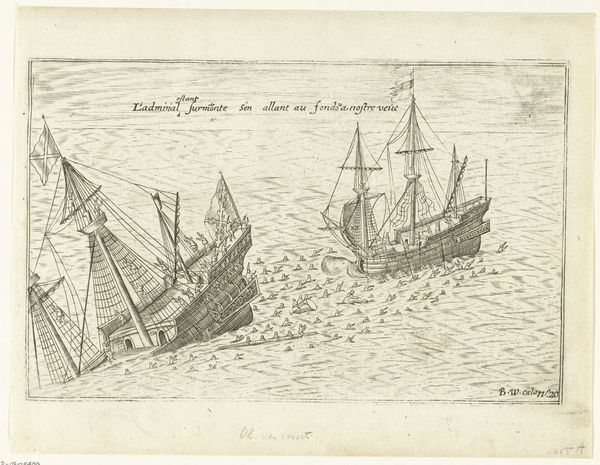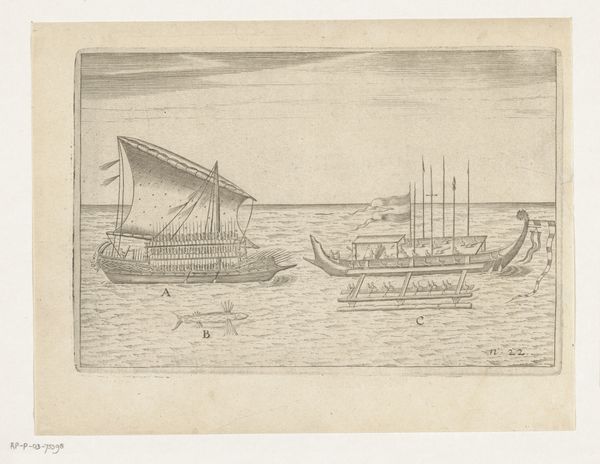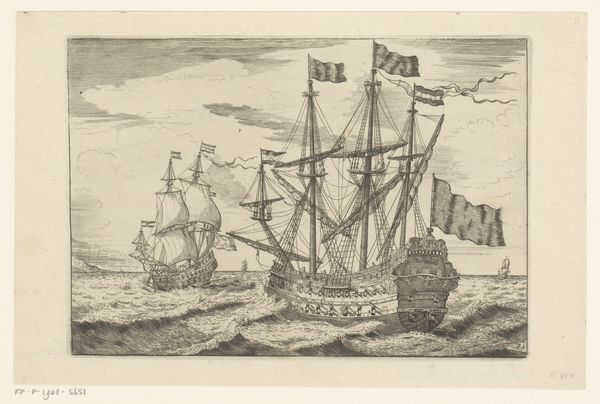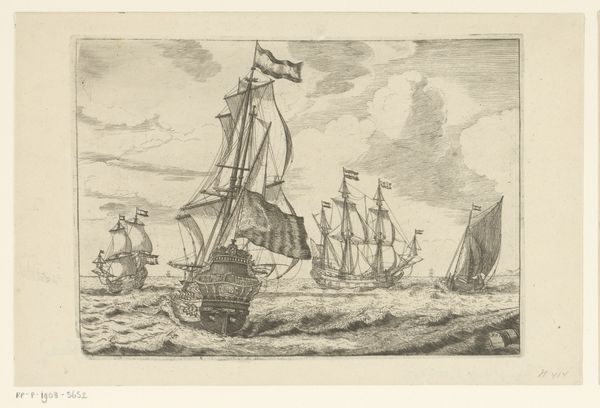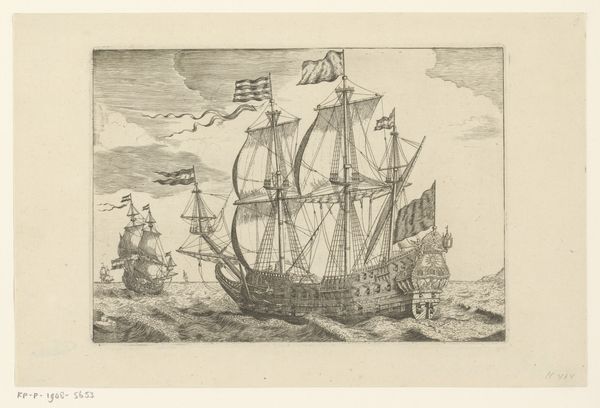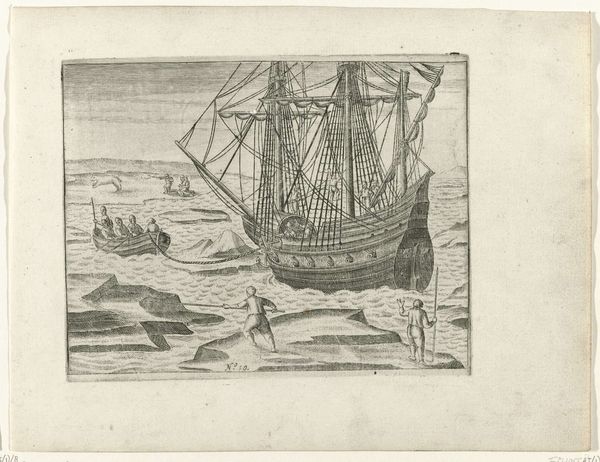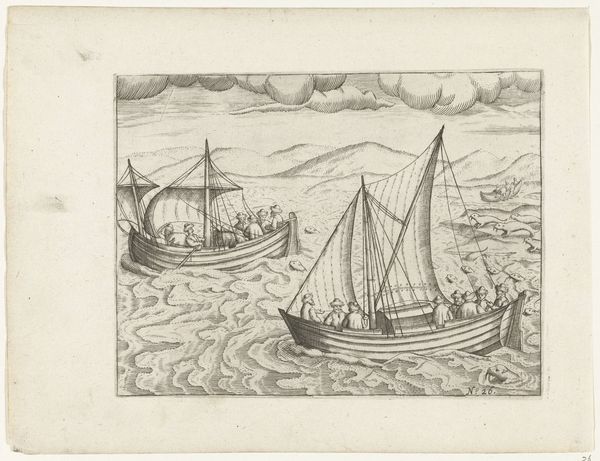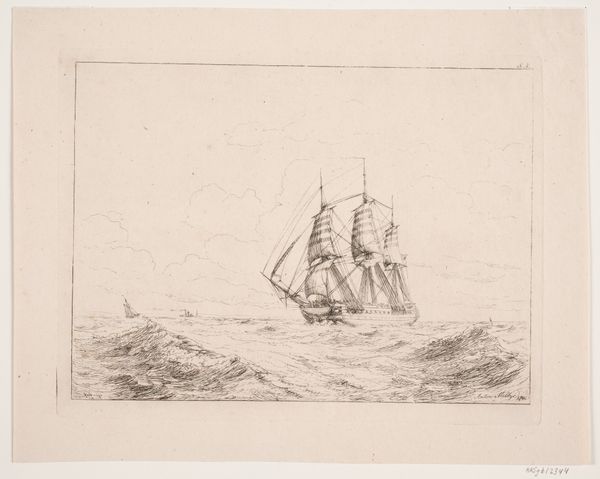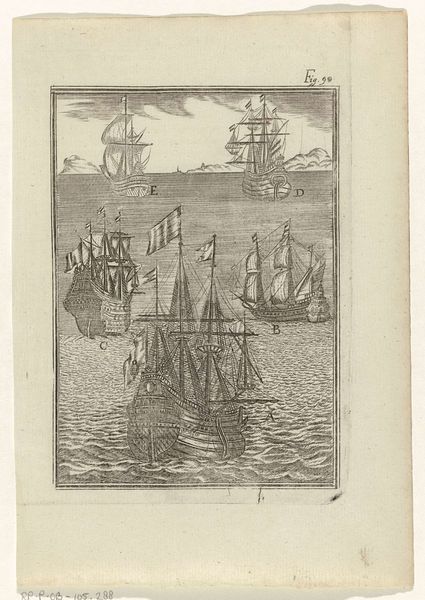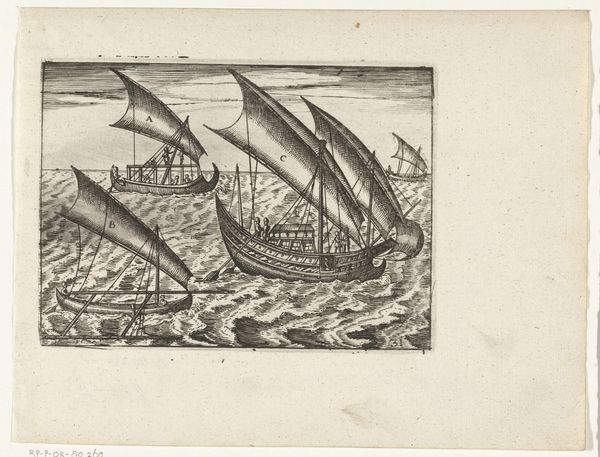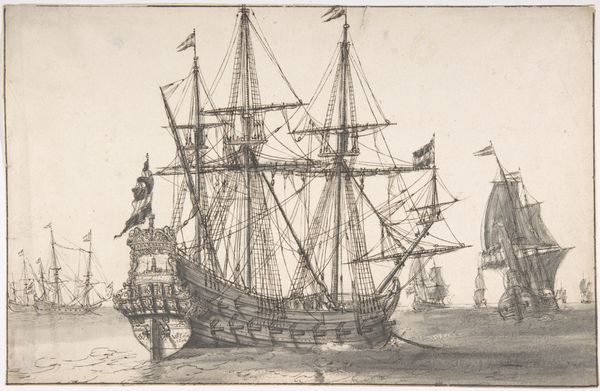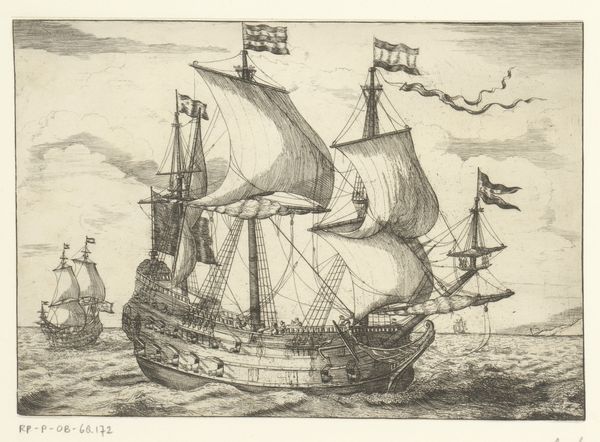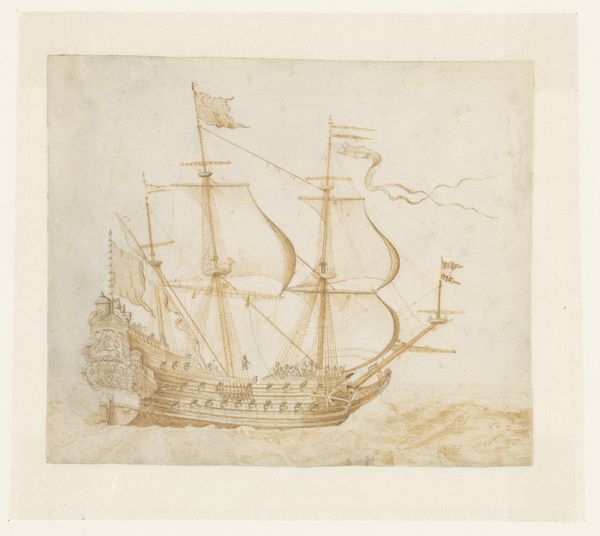
print, engraving
#
dutch-golden-age
# print
#
pen sketch
#
old engraving style
#
landscape
#
line
#
genre-painting
#
history-painting
#
engraving
Dimensions: height 145 mm, width 220 mm
Copyright: Rijks Museum: Open Domain
Curator: Here we have "Het schip Amsterdam overvallen voor Sedajoe, 1596," or, "The ship Amsterdam ambushed off Sedayu, 1596." It's an engraving that likely dates between 1597 and 1646 and the artist, unfortunately, is anonymous. Editor: Wow, it feels… chaotic, yet controlled. The detail! You can almost feel the sea spray, the tension. Is that… a sinking ship? Curator: Indeed. This print captures a key moment during the Second Dutch Expedition to the East Indies. We are seeing the Dutch vessel Amsterdam being attacked off the coast of Sedayu. From a postcolonial perspective, we must examine the violence inherent in this image. What stories are not being told here? Who is the victim and who is the perpetrator, and how are those roles assigned by history? Editor: Right. Makes you think. I was struck more by the artistry initially – look at how the engraver creates a sense of depth with just lines. The way the waves are suggested... but it's impossible to ignore the colonial narrative simmering underneath all those details, that you are right! It makes you wonder who it's for and for whom this is portrayed as heroism. Curator: Exactly. And the sheer number of figures crammed into this small space underscores the intensity of the conflict, reflecting perhaps, a European anxiety about their own vulnerability. Think about how this print likely circulated: Shaping public perception, reinforcing ideas about Dutch power and the "other". Editor: It almost feels… propaganda-ish, doesn’t it? Glorifying a moment of violence and portraying it as almost romantic with this level of craftsmanship. Now, if it were in colour and you didn’t understand any of the underpinnings of it, you might buy it just for how ‘historic’ it appears to be. Curator: I concur. By examining such depictions, we confront not only historical events but also the biases embedded within their visual representations. It demands a critical awareness that helps us navigate the legacies of colonialism today. Editor: Absolutely. It started for me as a purely aesthetic appreciation, I am seeing clearly now that looking closer helps us question everything. This really proves the picture's worth, well, more than a thousand words.
Comments
No comments
Be the first to comment and join the conversation on the ultimate creative platform.
